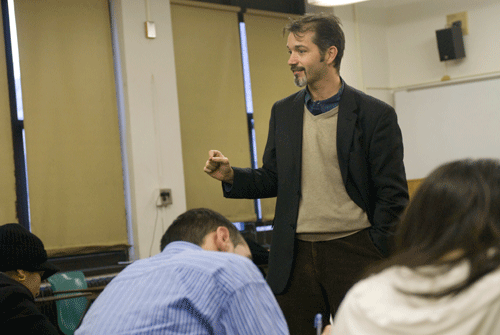Huffington Post 01/25/2016;
Original Article here: Cuba’s Entrepreneurs
Ted A. Henken, Former President of the Association for the Study of the Cuban Economy (ASCE) and Baruch College (CUNY) Professor
Cuentapropista (a Cuban entrepreneur) is a term that up until a few years ago would not have been used to describe a large sector of Cuba’s centralized and still heavily planned economy. But despite heavy odds, I have recently witnessed the proliferation of Cuban entrepreneurship and its positive effects on the Island. As a Yuma (a Cuban term of endearment referring to visiting Americans), I’ve seen Cuba’s “non-state” sector expand considerably, giving testimony to the entrepreneurial successes that everyday Cubans are achieving, and hunger to expand upon.
Engaging directly with Cuba’s entrepreneurial sector — while we push for an end to our pernicious trade embargo — allows us to remove the U.S. as the Cuban government’s bête noir and empower more Cubans to be the masters of their own fates. Some hardliners in the U.S. would argue that engaging any sector in Cuba is helping the monopolistic and undemocratic Cuban government consolidate its power. However, the last 50 years have shown that isolation has only aided the Cuban government in strengthening its monopolies while deflecting blame for its failing economy onto the U.S. embargo. Engagement with cuentapropistas, on the other hand, gives us the chance to begin to build relationships of trust and mutual benefit with the Cuban people.
In the face of constant economic instability and state control, cuentapropistas are the defining social and economic catalyst for Cuba’s future. They are men and women who display incredible motivation and creativity in their business ventures, and are willing to take risks, often at great personal cost. As a result, the burgeoning private sector is now one of the most productive areas of an otherwise failing economy.
In a fact sheet I recently released in partnership with Engage Cuba and the Cuba Emprende Foundation, we found that while Cuba has the most educated, low-cost labor force in the world, private sector opportunities for Cuban professionals continue to be severely limited. As a result, entrepreneurial Cubans have taken their fate into their own hands and are now estimated to be one-third of Cuba’s total workforce. The rate of self-employment has surged to new heights in the last five years, rising from just under 150,000 to over half a million cuentapropistas by mid-2015.
A surprising area of self-employment growth is in telecommunications. The chronic scarcities and bottlenecks caused by the lethal combination of state socialist planning and the U.S. embargo have resulted in the incubation of a true “maker” culture. Highly trained but underemployed computer programmers and telecom agents have started launching innovative start-ups like AlaMesa and Conoce Cuba or designing “lean” software and offline mobile apps for both a Cuban and international clientele. Aiming to encourage this dynamic phenomenon, new U.S. regulations issued by the Obama Administration during 2015 now allow the contracting of Cuba’s private sector IT and other professionals.
But don’t be fooled. There are still drastic internal barriers for motivated, business-minded Cubans. The tax structure is burdensome, the private sector is legally cut off from international trade (apart from imports and exports via “suitcase commerce”), and cuentapropistas enjoy little reliable access to wholesale goods, rental space, credit, or foreign investment. Basic infrastructure is woefully outdated, and Internet access — the driver of any modern business — is still very limited and costly. Perhaps this is why despite unprecedented growth over the past five years, the cuentapropista sector contracted for the first time in the second half of 2015, falling to 496,400 by January 2016.
There are also serious structural workforce issues. For example, every year over 4,000 information technology engineers graduate across the country, but there are a limited number of state positions available to them. Therefore, many of these graduates are forced to join the historic exodus of young professionals abroad in order to find an economic return on their educations.
The possibilities for these young entrepreneurs will be virtually limitless once the island is equipped with a modern telecommunications infrastructure — something that can be made possible with the help of American investment. But in order for U.S. telecommunication services and other businesses to help bring meaningful change in Cuba, Congress needs to lift the trade embargo.
Because while American entrepreneurs and businesses await an end to the embargo, both Americans and Cubans are missing out. It is estimated that the U.S. is currently forgoing 1.6 billion in potential sales to Cuba annually due to current policy. Americans from across political parties have duly noted this fact. According to a Pew Research Center report, 72 percent of Americans, including 59 percent of Republicans, favor ending the Cuban trade embargo.
It is ironic that many embargo supporters rightly critique the Cuban government for restricting the free market inside the Island while simultaneously supporting an embargo that unfairly restricts American businesses abroad and any benefits they could bring to Cuba’s struggling entrepreneurs and its people. By allowing Americans to bring business and investment to the Island, we will grow our own economy while supporting the Cuban people, including cuentapropistas, in the process.
 Ted A. Henken, Ph.D., is the President Ex-Officio of the Association for Study of the Cuban Economy (ASCE) and co-author of the book “Entrepreneurial Cuba: The Changing Policy Landscape.” Henken is a member of the Policy Council of Engage Cuba, a bipartisan organization dedicated to mobilizing American businesses and non-profit groups to support the ongoing U.S.‐Cuba normalization process.
Ted A. Henken, Ph.D., is the President Ex-Officio of the Association for Study of the Cuban Economy (ASCE) and co-author of the book “Entrepreneurial Cuba: The Changing Policy Landscape.” Henken is a member of the Policy Council of Engage Cuba, a bipartisan organization dedicated to mobilizing American businesses and non-profit groups to support the ongoing U.S.‐Cuba normalization process.




